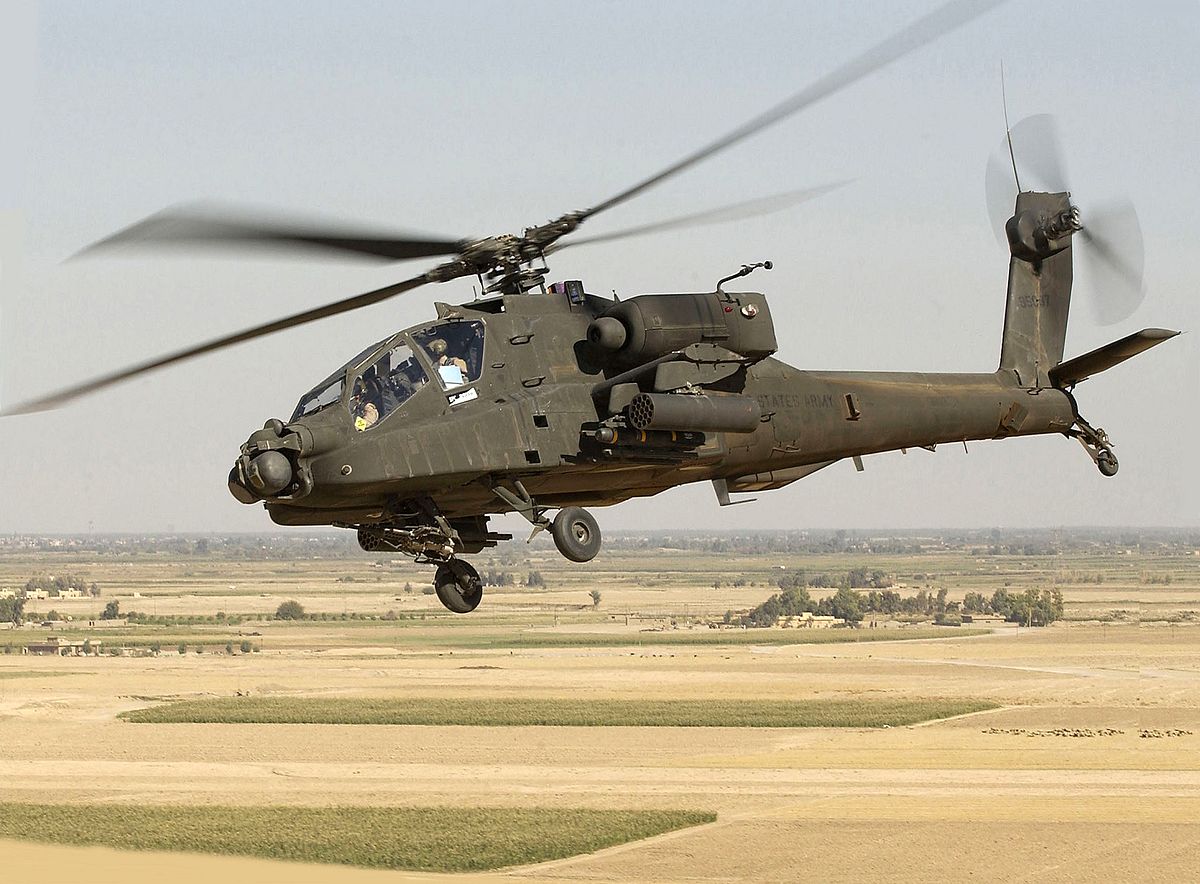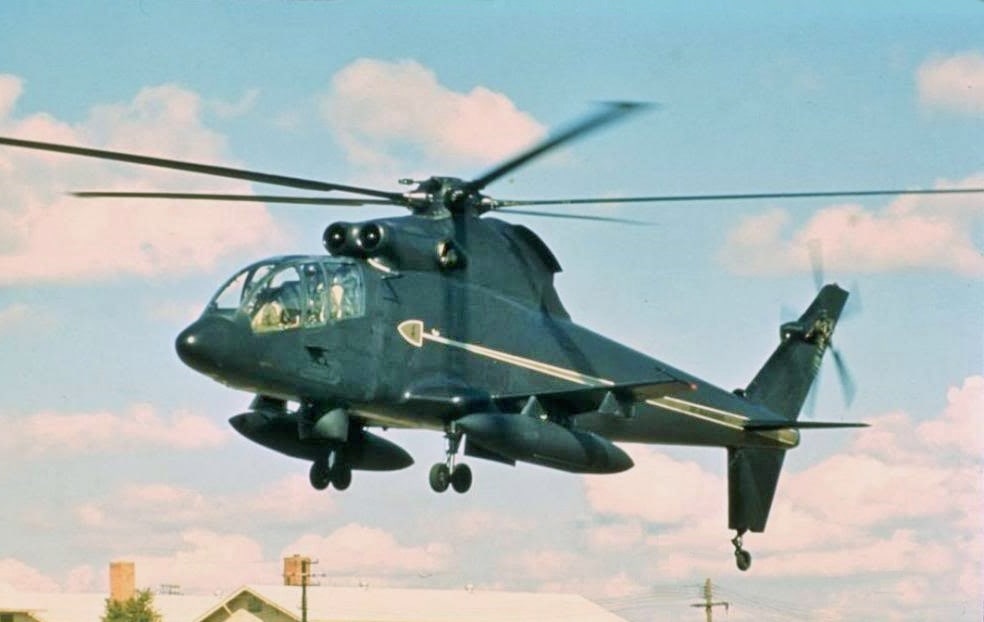I think that the single biggest change for the AH-56
as it developed out would be the change from single to twin engines. Witness Sea Cobras, H-60s, H-64s all being twin engine instead of single. That gives a little more survivability when getting shot at, since you can usually keep flying on about 50% power instead of having to land
right now.
Which
would add a big chunk of weight, the engine armor alone would effectively double. Not quite double if the two engines shared an armored bulkhead between the two bays like the Cobra, double if the engines are widely spread like on the Apache. I suspect that an airframe design converted from single engine to twin would keep the engines close together like on the Cobra, so a little less additional weight there.
But then you need to figure out engines. The T64 is a
very light engine for the power, it's 720lbs for ~4000hp, only slightly heavier than the 1500hp T53 engine in the Hueys. My best guess would be a pair of early T55s, as used in early Chinooks (T-55-L-7Bs, 2650hp MIL 2250hp sustained). The T-55-L-7B weighs in about about 570-600lbs. And the increased weight in the transmission for a dual-input box able to handle ~5300hp instead of ~4000. Though it might end up that the twin engines get flat-rated to 2000hp each, and that would save your transmission a little.
Guessing on armor and transmission weight here, you're probably looking at a total of +1500lbs for the twin engine version. ~250lbs more in the engine, 750lbs of armor, 500lbs of stronger transmission.
The Hughes candidate for the AAH competition started life with a frail looking glass cockpit as did early AH1 Cobras.
Find out how to recognise the versions of Boeing AH-64 Apache, and learn what are the differences between the Apache and the Mil Mi-28, Harbin Z-19, Z-21 and Changhe Z-10.

www.aircraftrecognitionguide.com
I suspect a production Cheyenne would have received a different cockpit canopy too.
The Army Cobras got flat armored canopies as part of an attempt to reduce light glints causing detection at ranges where you couldn't otherwise see the helicopter easily. The rounded canopies sent glints everywhere, while the flat canopies only sent glints in a single direction. Since that happened to the (Army) Cobra, the "interim Attack Helicopter", I'd assume that it would happen to the Cheyenne.
IIRC the Marines did not do the flat cockpits because the armored glass was heavy.
The other significant modification I'd expect to see is the use of a dual-weapon nose turret like on later AH-1Gs, with both a 7.62mm Minigun and a 40mm GL, instead of a single-weapon turret with choice of one or the other.
====================
I think the single most interesting part of the Cheyenne is that with their planned number of pylons plumbed for drop tanks,
they'd actually be able to self-deploy from the US/Canada to the UK or France. It'd be a very long flight at only ~200 knots (~11 hours), but they could just fly over directly. No need for packing them into cargo aircraft or even tankers for midair refueling (not that I'd expect Army birds to be capable of in-flight refueling). "Hi, heard you needed some more attack helicopters?"
The sheer number of weapons that a Cheyenne could carry would terrify most ground units. 18x TOW missiles
plus 6x19shot Hydra rockets (I think. Might be only 6x7 and that would be sad). And that's
while carrying two drop tanks. Or Napalm canisters. Or 2x 1000lb bombs. Or another 18x TOWs.
====================
I'm not sure if the Marines would adopt the Cheyenne. Obviously, they paid for Twin Huey/Sea Cobra development so that they'd have two engines over water. But the Army would be getting rid of a whole lot of Cobras for cheap, and it'd be a lot easier on the budget to buy those.
Cheyenne uses the same T64 engines as the H53s, so they already have spare parts for the single-engined version.
But nothing in the Marine inventory uses T55s like I suspect a Twin Cheyenne would use. The CH-46 uses T58s, but those do not have enough power for the Cheyenne. The OV10 uses TPE331s, and those are only 1000hp each. On the other hand, the original Twin Hueys and Sea Cobras were running a PT6 Twinpack and that was the only place the Marines used that engine. So dual T55s would "merely" be an expensive development instead of a logistical no-go.
======================
Side note if the Cheyenne does get deployed: Now there's a whole herd of fairly low-hour AH-1 Cobras available from Uncle Sam's surplus. I bet we'd see a lot more countries with attack helicopters (Europe) if they could have bought cheap Cobras!







